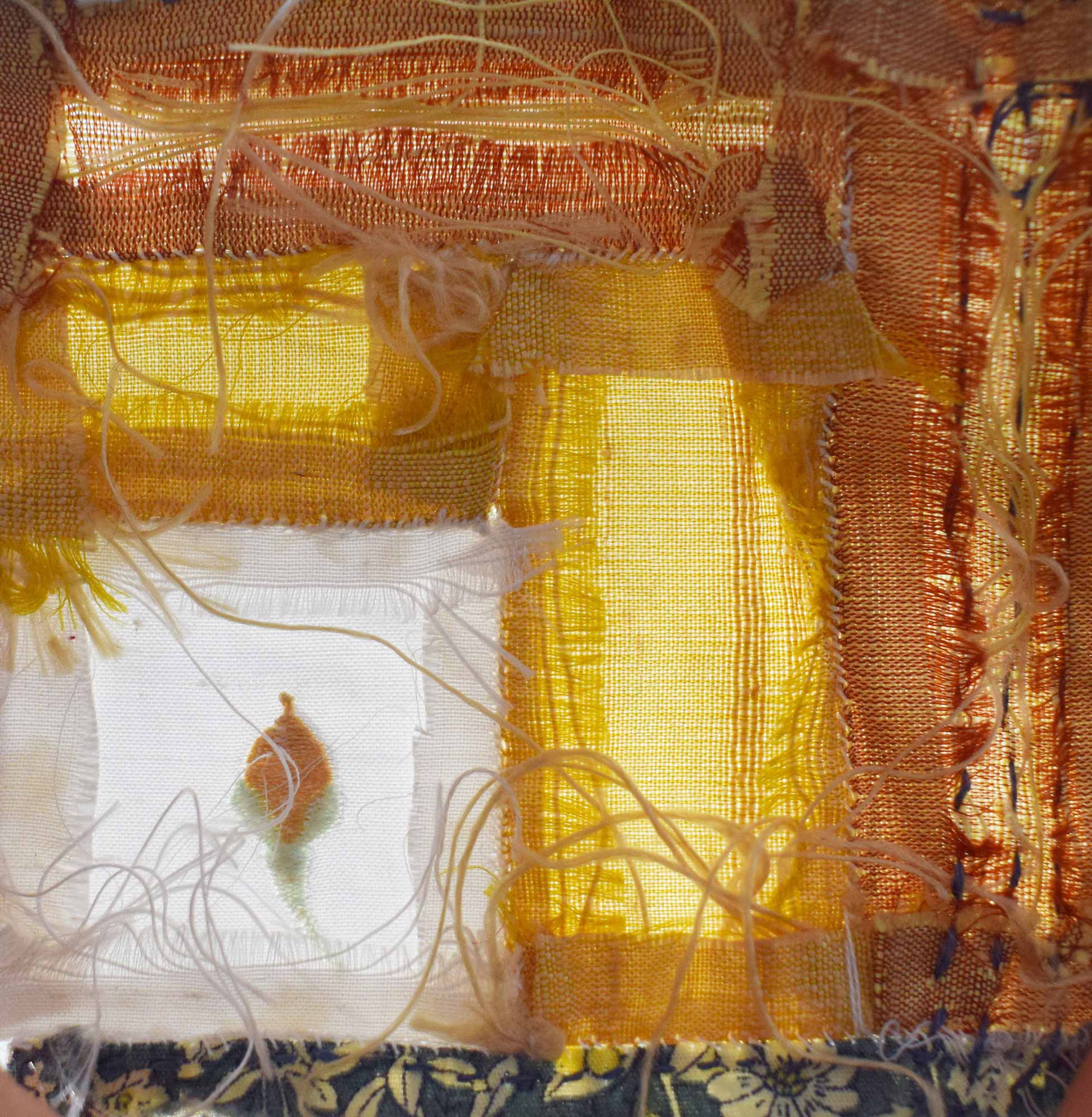
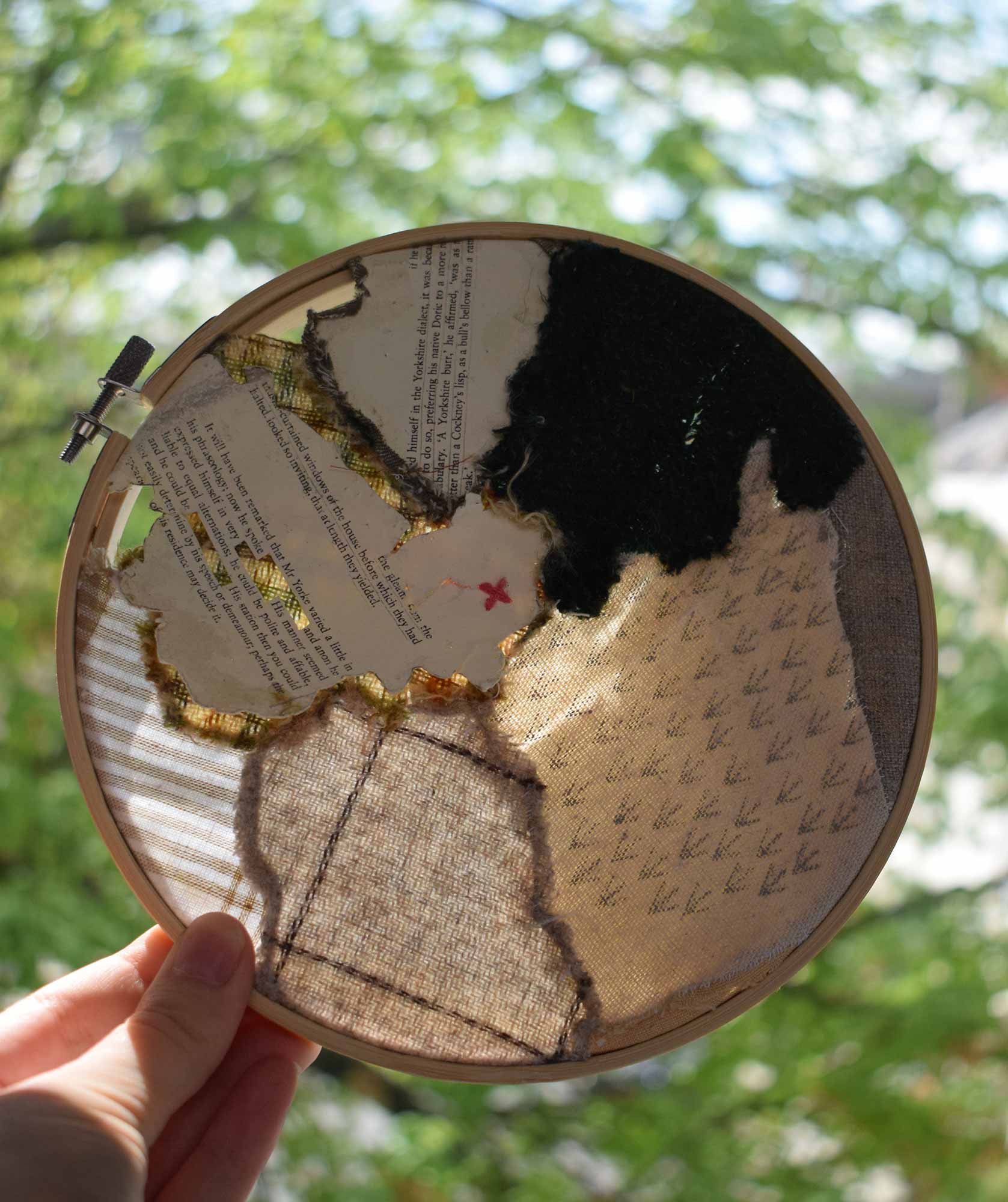
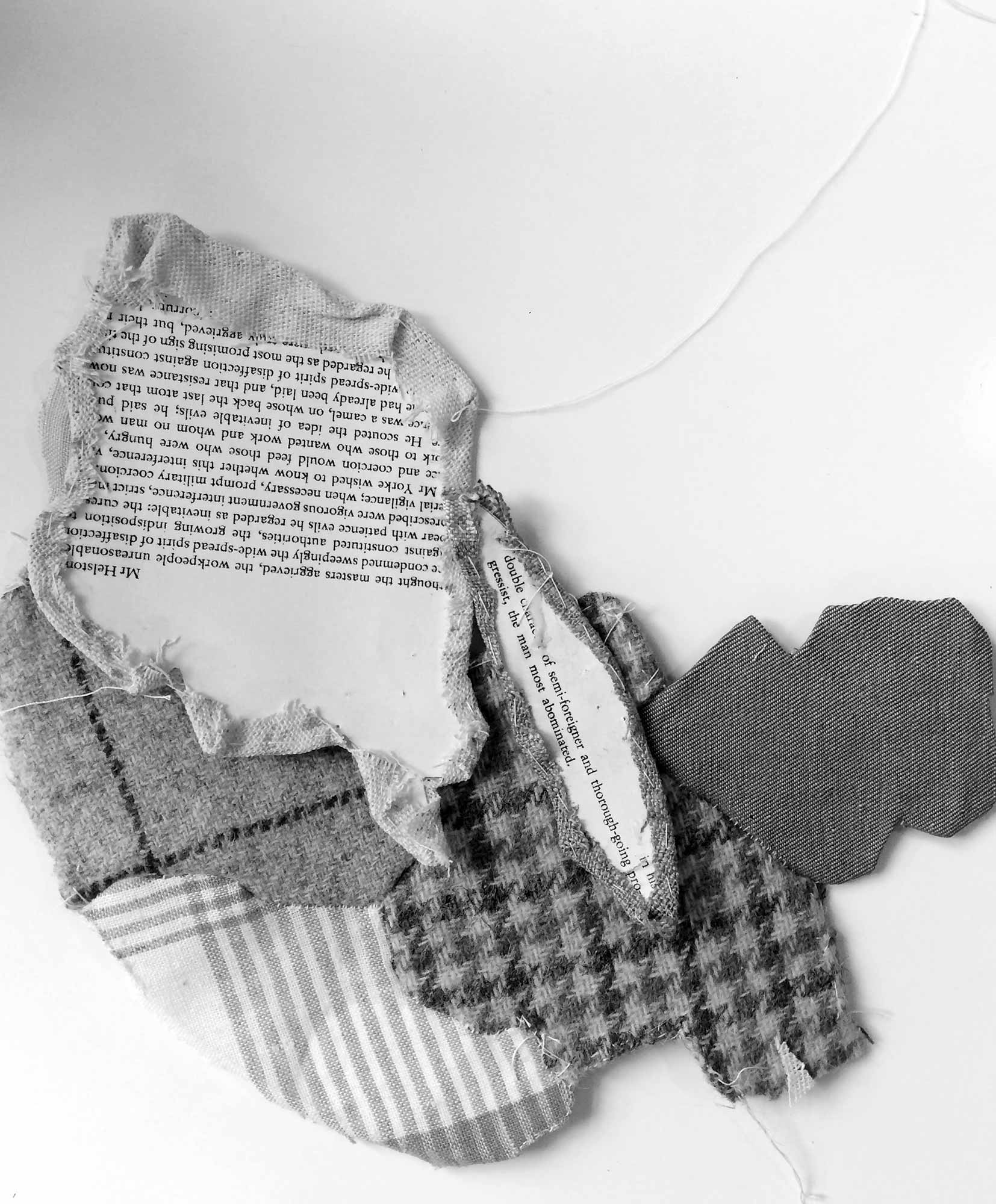
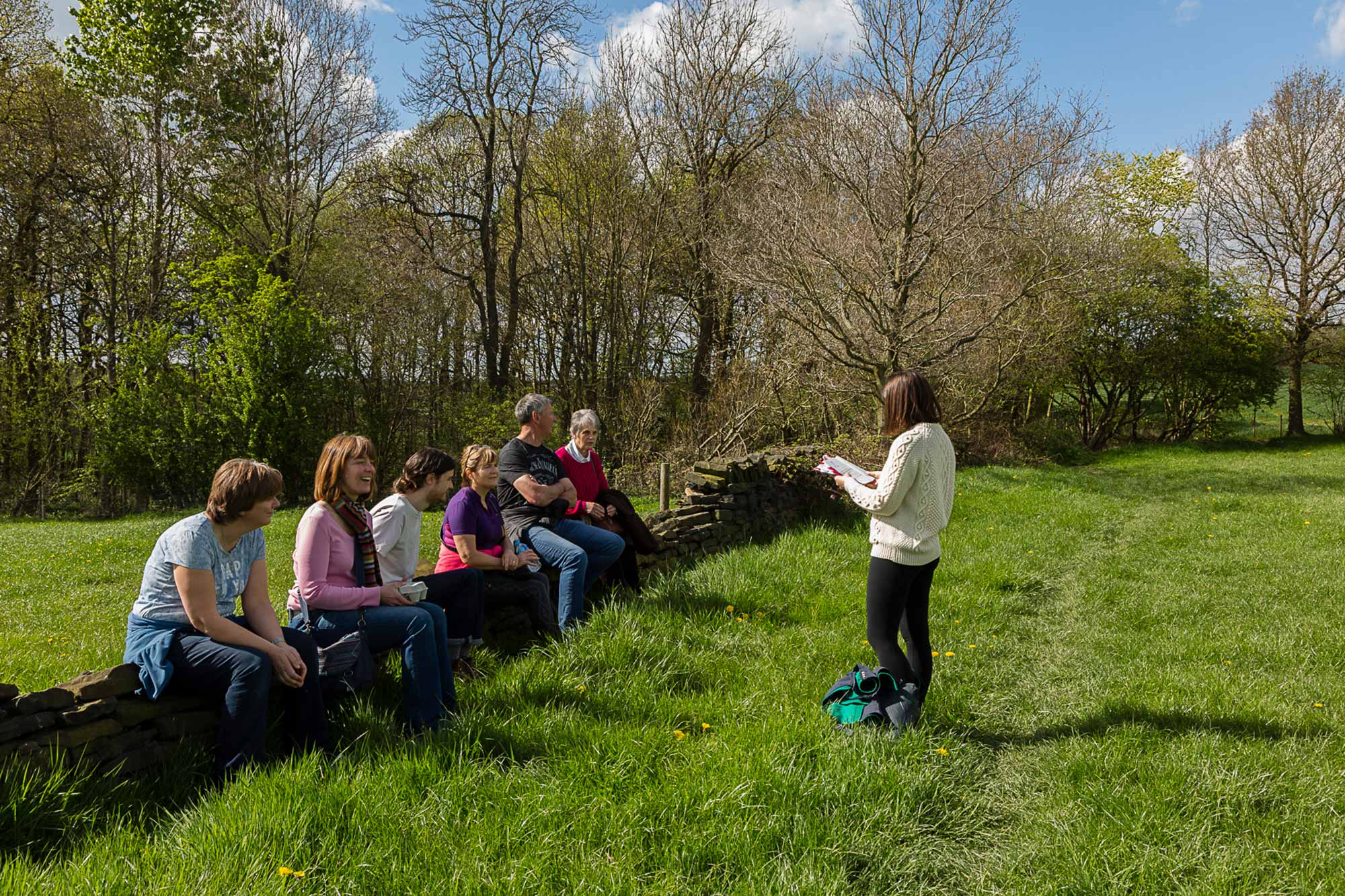
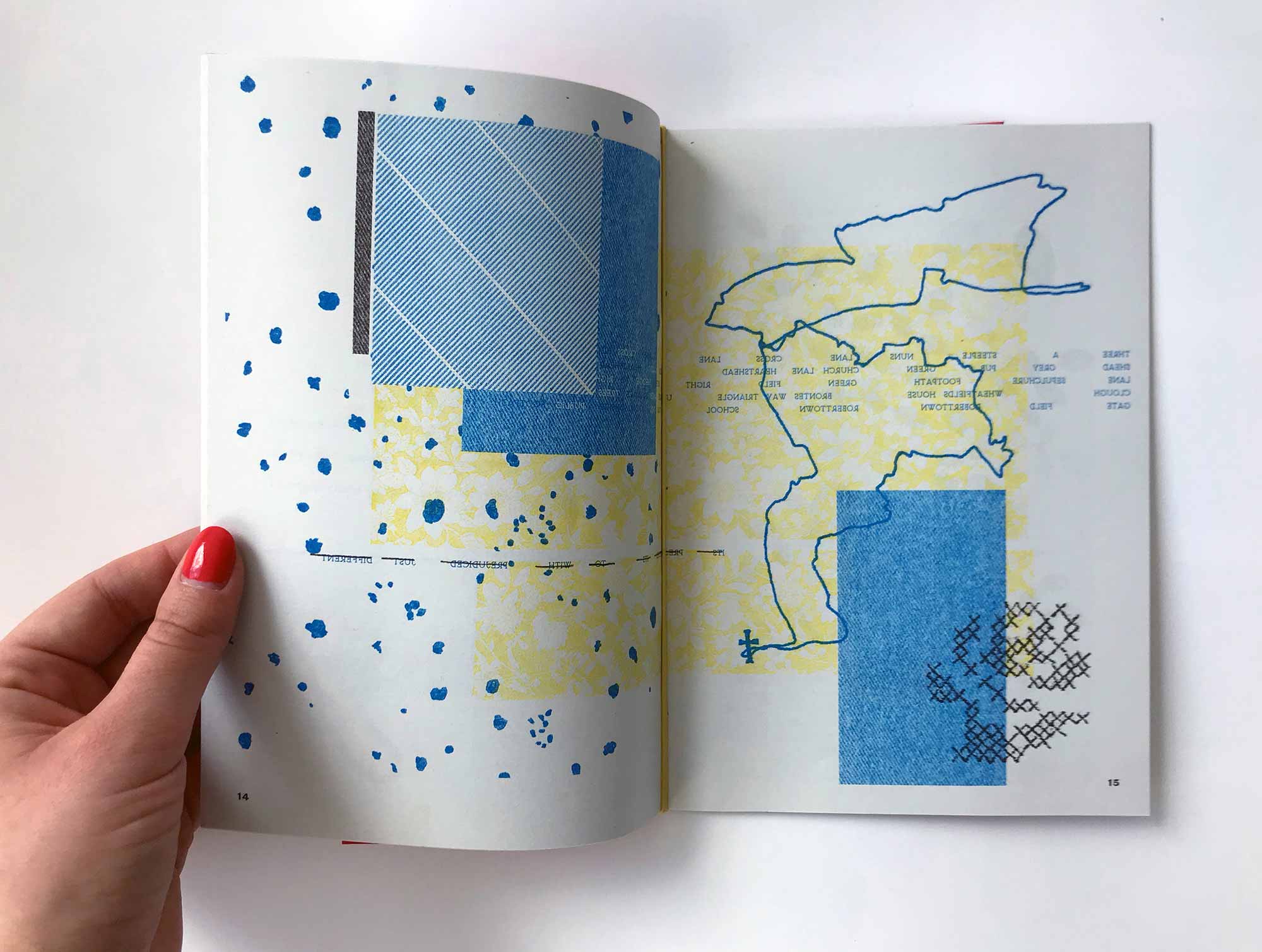
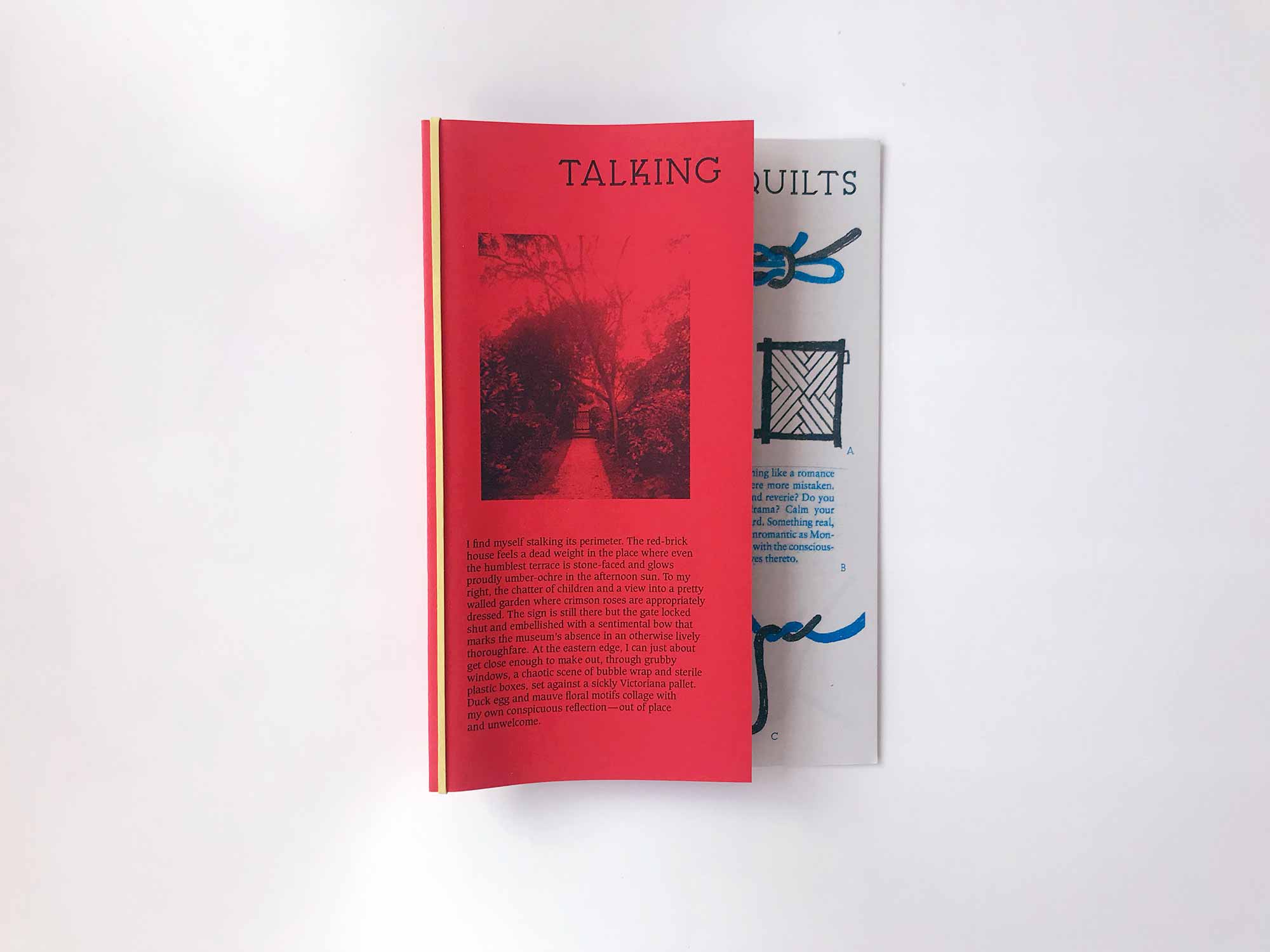
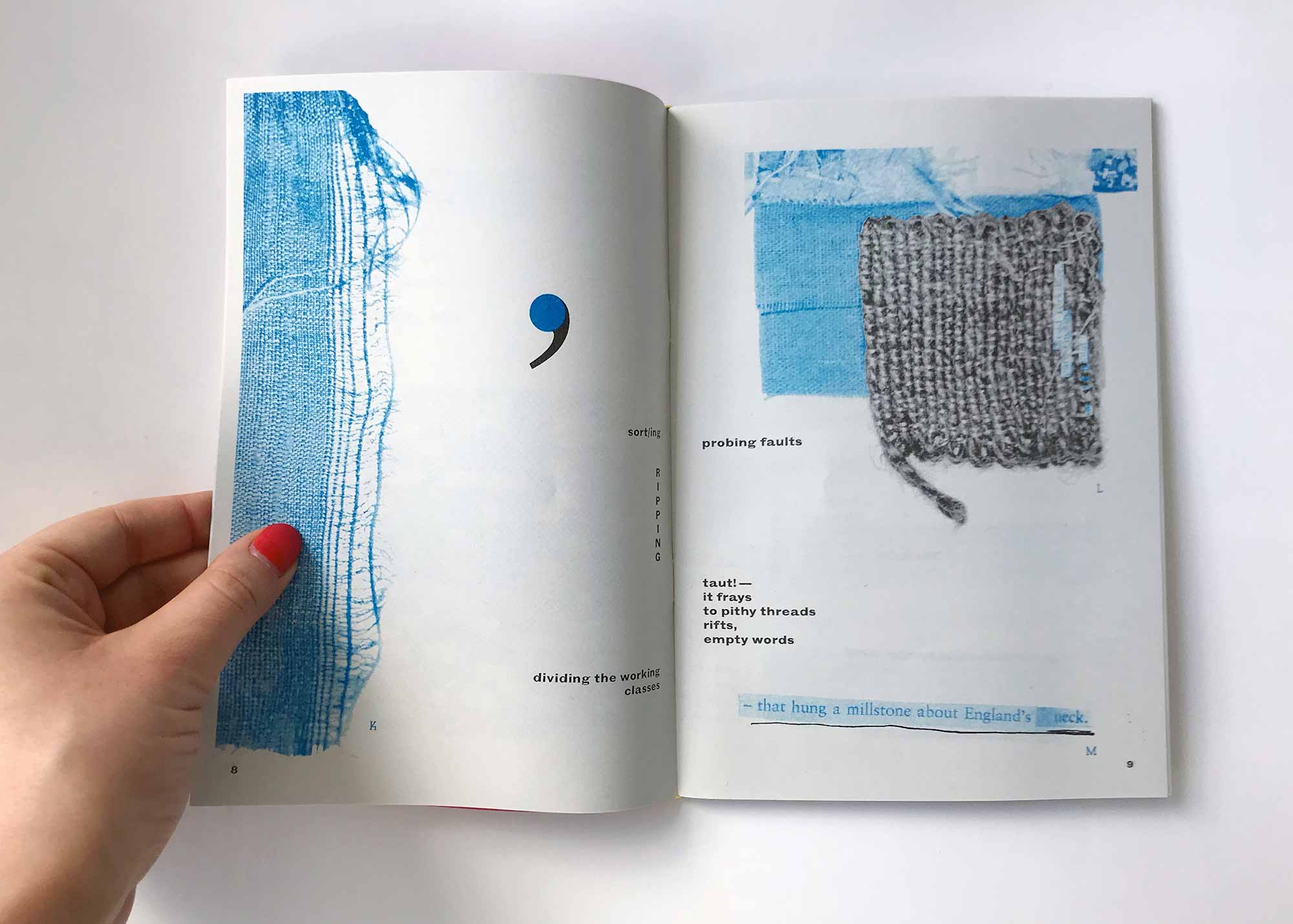
‘I find myself stalking its perimeter…I can just about get close enough to make out, through grubby windows, a chaotic scene of bubble wrap and sterile plastic boxes set against a sickly Victoriana palette. Duck Egg and mauve floral motifs collage with my own conspicuous reflection—out of place and unwelcome.’
Talking Quilts began with the 2016 closure of Red House, a 17th– century clothier’s house, turned museum, that stands in the Spen Valley in West Yorkshire. Set in the tumultuous wake of the EU referendum result; Talking Quilts explores the important role that now-threatened histories and cultural spaces play in forming collective meaning in post-industrial, working class communities, who feel left behind and marginalised.
The project draws on depictions of Red House in Charlotte Brontë’s 1849 novel Shirley, where the themes of class struggle, a rising nationalistic sentiment and an increased polarisation between ‘London’ and those in ‘the north’, seem as relevant to today, as to the period of 1811-12, following the Napoleonic wars, when national economic depression disproportionately affected the textile industry of West Yorkshire and lead to mass industrial unrest.
The project uses site-writing practices to find new ways of listening and speaking calmly about the difficult issues of place and belonging by enabling the conflicting voices of the different communities within West Yorkshire, and between West Yorkshire and London, to challenge one another through a productive dialogue rather than antagonistic violence.
The work developed through a method that brought together different quilting traditions and continually shifted between making, talking, writing and drawing. Concepts, such as applique and piecing, were borrowed from quilting to translate scraps of archival material, literature and oral history interviews, which were woven into verse and drawings that speak to one another from different times and spaces. Finally, these were embroidered—through elaborative storytelling, annotation and drawing—with Joanne’s own interpretation of conversations with her family that affected her sense of both distance and loyalty to her hometown in West Yorkshire. These conversations were democratised and further embellished through, a zine, a series of performances and a guided walk.
Joanne is an architectural and urban designer, educator and mentor. Through her work on the research and design of social housing and the public realm, Joanne advocates for a built environment that fosters equality and collective wellbeing.
Since graduating with a BSc and MArch in Architecture from the Bartlett, Joanne has contributed to a number of architectural and urban design practices including Peter Barber Architects, Sarah Wigglesworth Architects and Publica. More recently, Joanne has been working with community groups in Deptford and Essex to develop housing design codes that will support their Neighbourhood Plans. In April 2019, Joanne will become an associate of the initiative ‘Public Practice’ and take up a placement as an urban designer at Greater Cambridge Council. Alongside her work in practice, Joanne is a visiting critic and leads architectural summer schools that engage with young people in Architecture.
Joanne advocates for greater diversity within the architectural profession and for the last two years she has a volunteered as a mentor for the charity Arts Emergency, which supports young people from working class backgrounds to pursue a career in the creative industries.
Joanne was a member of the Site-Writing cohort in 2016 and the module formed part of the MA Architectural History and Theory course.
(adapted from the exhibition text I wrote for ‘Gutter’)
Joanne’s work celebrates the ‘in-between’ qualities of the site-writing module as an interdisciplinary critical spatial practice by reflecting on her own northern, working class heritage to translate and democratise architectural and social histories that are often marginalised. Whether in-between the public and the domestic, class racial, and gender binaries, to be in this space is to be out of place and not quite belong. In this moment of increased polarization, the in-between is a place that holds optimism and promise. It is from here that we can understand multiple points of view, making it an important space from which to mediate, form new connections and build empathy.
Novel: Charlotte Brontë, Shirley. ed. J Cox (St Ives, Penguin classics, 2006). Fanzine: Laura Oldfield Ford, Savage Messiah (London, Verso, 2011). Exhibition: ‘The Colours of India’, London Quilters Exhibition (Swiss Cottage Library, 06 March-15 April 2017).
If you would like a free printed copy of the zine then please email talkingquilts@zoho.eu to arrange delivery.






































































